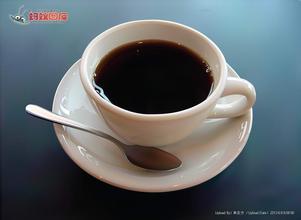High-quality Indonesian coffee raw bean classification standard brand altitude planting environment origin
fine coffee beans
1. Generally speaking, countries close to the equator are not classified according to altitude because coffee is grown at higher altitudes. In addition, if hand-picked, and the use of water washing method processing, because of the mixed immature beans and debris less, also do not use bad points to grade. Therefore, the size of the screen is generally used as the standard for classification.
Such as: Colombia, Tanzania, Kenya
2. Countries far from the equator and treated with water washing are likely to be planted by C, so elevation is used as the classification standard
such as Mexico, Guatemala, Honduras, Costa Rica, El Salvador
3. Mainly hand-picked, but mostly dry processing. Dry processing is easy to mix immature beans and other defective beans, so the use of bad points to grade.
For example: Ethiopia, Peru.
4. In addition to the countries listed above, almost all of them adopt screening size and bad points as classification standard species.
e.g. Brazil, Indonesia, Vietnam, Jamaica
IV: Grading according to the proportion of sieve and defective beans
Defective beans are an important factor in spoiling the flavor of the final coffee. Therefore, defective beans should also be removed in the final step of green bean processing. Therefore, according to the proportion of defective beans, supplemented by screen size is also used as a classification method. Due to the rise of the fine coffee trend, coffee producing countries are increasingly paying attention to the quality of coffee, and controlling defective beans is the most important way, so basically using the proportion of defective beans as a grading method or auxiliary basis is becoming more and more common.
At present, Jamaica, Brazil and Ethiopia are the main representative countries that adopt the proportion method of defective beans. Jamaica is based on the production area, altitude, sieve, defective bean ratio as a comprehensive rating standard, defective bean ratio as an important basis. Jamaica strictly controls the proportion of defective beans, with a maximum of 4% of defective beans in each grade.
Brazil is another special country. Brazil is the world's largest coffee producing country, due to the large output, many origins, classification work is quite troublesome, and it is not suitable to adopt a single classification standard, so Brazil also adopts a variety of classification methods at the same time, defective bean ratio, screen, cup evaluation test are used in the Brazilian coffee bean classification process. The first two are needless to say, and the cup rating test is one of the characteristics of Brazilian coffee grading.
The so-called cup evaluation test is to evaluate the aroma and taste of coffee beans after being ground into powder and soaked in hot water (about 90 degrees Celsius). There are 6 grades: Strictly Soft, Hard, Rio, Rioy. The first three grades can be uniformly called mild, the sour and sweet balance of coffee, and the taste is mild. The last three kinds are slightly worse in taste, especially the last two kinds are the worst. The reason why iodine smell appears is that the soil near Rio de Janeiro has a strong iodine smell. When coffee is harvested, it falls on the ground and absorbs soil odor.
The above three are now more popular coffee grading methods, but not all. Ethiopia, for example, will treat the way coffee beans are processed as one of the criteria for grading. In addition to this, there is an increasingly widely used COE rating system. As coffee producing countries pay more attention to coffee quality and producers are more motivated, the classification of coffee beans is not limited to the above three main methods. Only more careful cultivation can produce higher-quality coffee, in order to get a high rating in the rating, so coffee rating segmentation and strict control of coffee quality is undoubtedly a good thing.

Important Notice :
前街咖啡 FrontStreet Coffee has moved to new addredd:
FrontStreet Coffee Address: 315,Donghua East Road,GuangZhou
Tel:020 38364473
- Prev

Panamanian boutique coffee bean manor name Hartmann honey flavor description method variety introduction
Panamanian boutique coffee Panamanian Hartmann Manor Black Honey treatment Finca Hartmann Black Honey altitude: 1250-1700 Meters treatment: Black Honey (Black Honey treatment) production area: Hartman Hartmann Estate Manor: Palo Verde Manor: Allen Hartmann Variety: Caturra,Typica Flavor description: honey Sweet, Longan dried
- Next

Introduction to the Flavor description Manor of Ethiopian Fine Coffee Bean Yejia Snow Flavor
Yejiaxuefei coffee flavor description is fresh and bright, for the Chinese, it is easy to accept, on the contrary, the acceptance of mellow bitterness is low, but bright is not wrong, we should pay attention to the adjustment of baking degree, at least baking. We can accept light roasting, but coffee with a fresh and bright sour flavor, even if the baking temperature reaches medium, or medium depth, in the flavor.
Related
- Detailed explanation of Jadeite planting Land in Panamanian Jadeite Manor introduction to the grading system of Jadeite competitive bidding, Red bid, Green bid and Rose Summer
- Story of Coffee planting in Brenka region of Costa Rica Stonehenge Manor anaerobic heavy honey treatment of flavor mouth
- What's on the barrel of Blue Mountain Coffee beans?
- Can American coffee also pull flowers? How to use hot American style to pull out a good-looking pattern?
- Can you make a cold extract with coffee beans? What is the right proportion for cold-extracted coffee formula?
- Indonesian PWN Gold Mandrine Coffee Origin Features Flavor How to Chong? Mandolin coffee is American.
- A brief introduction to the flavor characteristics of Brazilian yellow bourbon coffee beans
- What is the effect of different water quality on the flavor of cold-extracted coffee? What kind of water is best for brewing coffee?
- Why do you think of Rose Summer whenever you mention Panamanian coffee?
- Introduction to the characteristics of authentic blue mountain coffee bean producing areas? What is the CIB Coffee Authority in Jamaica?

